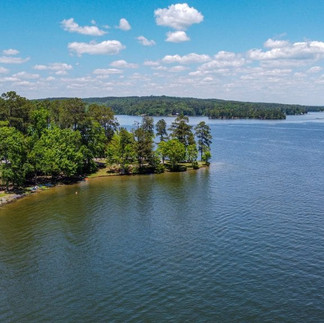History of Lake Martin
- Michael Knapp
- Oct 6, 2023
- 2 min read
Navigating Through Time: A Historical Journey of Lake Martin, Alabama
Lake Martin, Alabama, is not just a serene body of water; it's a place steeped in history, with a story that spans centuries. From its geological origins to its role in the development of the region, Lake Martin has played a significant role in shaping the culture and heritage of the area. In this blog, we'll take you on a historical journey through the fascinating past of Lake Martin.
Geological Beginnings
Lake Martin owes its existence to the construction of Martin Dam, which was completed in 1926. This massive dam was built on the Tallapoosa River, and its primary purpose was to generate hydroelectric power for the growing region. As the dam was completed, it created the vast reservoir now known as Lake Martin, covering an impressive 41,150 acres. The lake's crystal-clear waters are a result of its location in the Appalachian foothills, which are rich in granite and quartzite.
Native American Heritage
Long before the construction of Martin Dam, the area around Lake Martin was inhabited by various Native American tribes, including the Creek Nation. These indigenous peoples relied on the abundant natural resources the area provided, including fish from the river and fertile land for agriculture. Evidence of their presence can still be found in the form of ancient artifacts and historical sites.
The Hydroelectric Era
The construction of Martin Dam marked the beginning of a new era for the region. Not only did it provide a source of clean energy for the growing communities in Alabama, but it also created a recreational haven that would draw visitors for decades to come. The dam was named after Thomas Wesley Martin, a prominent figure in Alabama's history and the chairman of the Alabama Power Company, which oversaw the dam's construction.
Agriculture and Development
Lake Martin's waters played a vital role in the development of agriculture in the region. The dam's controlled release of water helped regulate the flow of the Tallapoosa River, which, in turn, enabled more reliable irrigation for farms downstream. The fertile land around the lake also contributed to the area's agricultural prosperity.
The Lake Today
Today, Lake Martin is celebrated not only for its historical significance but also for its natural beauty and recreational opportunities. The lake has become a popular destination for boating, fishing, swimming, and camping. It's also home to various communities that have grown around its shores, offering a blend of modern amenities and a strong connection to the region's past. Make sure to check out www.lakemartinpontoon.com
Conclusion
Lake Martin's history is a testament to the transformative power of human innovation and the enduring connection between people and the land. From its geological formation to its role in agriculture and hydroelectric power generation, Lake Martin has been an integral part of the Alabama landscape. As you visit this serene body of water, take a moment to reflect on the rich tapestry of history that surrounds it, and appreciate the legacy of those who came before, leaving their mark on this beautiful corner of the South.



















Comments